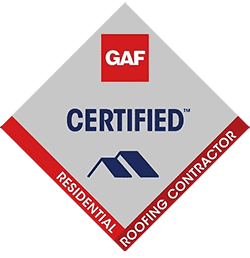7 Factors That Affect Roof Replacement Costs!
A roof replacement is one of the most significant and expensive home maintenance investments a homeowner will ever make.
It is essential not just for protecting your home from the elements but also for enhancing its longevity, energy efficiency, and potentially even its resale value.
The cost of replacing a roof can vary widely depending on several factors, particularly in regions like Beaumont and Port Arthur Texas, where unique climate conditions and local considerations are involved.
This article explores the key factors influencing roof replacement costs to help you make informed decisions when planning this critical home improvement project.
Factor 1: Type of Roofing Material
The choice of roofing material is perhaps the most significant factor affecting the overall cost.
Options include asphalt shingles, metal roofing, tiles, and wood shakes, each with unique price points and advantages.
Asphalt shingles are the most common due to their affordability and reliability.
At the same time, metal roofs have a higher upfront cost but offer exceptional durability and energy efficiency—an essential benefit in Texas's hot and storm-prone climate.
While elegant and long-lasting, tile roofs are among the most expensive due to their weight and the specialized labor required for installation.
Wood shakes are an option for those seeking a natural look, though they require more maintenance and are less suited to humid climates like Beaumont.
Factor 2: Roof Size and Pitch
The size and pitch of your roof also play a critical role in determining replacement costs.
Larger roofs require more materials, while steep or complex roof pitches demand more labor and potentially specialized equipment, which can drive up costs.
Homes in Beaumont and Port Arthur with intricate designs or multiple gables often see higher pricing due to the additional challenges posed by their architectural complexity.
Factor 3: Roof Accessibility
The ease with which contractors can access your roof is another significant cost factor.
A roof with limited access due to extensive landscaping, fences, or the height of the home may require extra time and effort to navigate, resulting in higher labor charges.
In urban neighborhoods or areas with dense vegetation, contractors might need additional equipment or staging solutions, which would further increase costs.
Factor 4: Required Permits and Inspections
Roof replacements often require permits to comply with local building codes and the fees for these permits can vary by city or county.
In Beaumont and Port Arthur, homeowners should budget for these administrative costs and any inspections required throughout the project.
Inspections ensure the roof is installed correctly and adheres to local safety standards, but they add an extra expense to the overall project.
Factor 5: Underlayment and Insulation Needs
Beneath your roof's exterior, underlayment and insulation are critical for protecting your home and improving energy efficiency.
Depending on the condition of your roof, replacing or upgrading these layers may be necessary, especially in regions like Beaumont and Port Arthur, where heavy rain and humidity are common.
While premium underlayment and insulation options add to the upfront cost, they often lead to long-term savings by improving energy efficiency and reducing cooling costs in Texas's hot summers.
Factor 6: Labor Costs in the Region
Labor costs can vary significantly based on your location.
In Beaumont and Port Arthur, factors such as local economic conditions, the demand for skilled labor, and the competitiveness among contractors all influence pricing.
Comparing bids from multiple respected contractors can help make certain that you are getting a fair price for the required quality of work.
Factor 7: Seasonal Influences
Seasonal trends also influence roofing work.
In Texas, the blistering summer heat can slow down the pace of work, leading contractors to adjust their rates accordingly.
On the other hand, spring and fall are typically peak roofing seasons, where increased demand for services may drive up prices.
Scheduling your project during off-peak times such as winter could potentially lead to cost savings, provided the weather conditions are suitable for roofing work.
Conclusion
Understanding the factors that influence roof replacement costs is crucial for homeowners in Beaumont and Port Arthur Texas.
Planning carefully, from selecting the right materials to accounting for labor and seasonal trends, can help you budget effectively for this major home improvement project.
By working with respected contractors and considering all the variables, you can be certain that your roof replacement enhances your home's safety and energy efficiency and adds significant long-term value to your property.
Key Takeaways
FAQs
- The choice of roofing material greatly influences cost, with options varying in price and durability.
- Roof size and slope affect the complexity and overall expense of replacement.
- Accessibility challenges can lead to increased labor costs.
- Enhanced underlayment and insulation might add to initial costs but offer long-term savings.
- Permits and local regulations in Beaumont and Port Arthur can add extra fees.
- Selecting the right contractor is key to managing costs and ensuring quality.
- Timing your replacement strategically can optimize pricing.
- What is the most cost-effective roofing material?
- Asphalt shingles are typically the most budget-friendly material, offering good durability and availability.
- How can roof pitch affect replacement cost?
- Steeper roofs require more safety measures and often more replacement time, leading to higher labor costs.
- Is it cheaper to replace a roof in certain seasons?
- Yes, costs can be lower in off-peak seasons like winter or late fall, provided weather conditions permit the work.
- Do I need a permit for roof replacement in Texas?
- Permits are generally necessary and require adherence to local codes, varying by city or county.
- How do I identify if my roof needs replacement rather than repair?
- Extensive leaks, visible damage, and age (typically over 20 years) are strong indicators for replacement over repair.
- Can I negotiate the labor costs with roofing contractors?
- While there is limited room for negotiation, comparing multiple quotes can help you choose the most competitive pricing.
- What are the benefits of a metal roof in Texas?
- Metal roofs offer longevity, energy efficiency, and heat deflection, making them suitable for Texas climates.
- How does accessibility factor into roofing costs?
- Difficult access usually means longer work time and possibly the need for specialized equipment, thus increasing costs.
- Are there financing options available for roof replacement?
- Many contractors offer payment plans or partnerships with financial institutions to spread out the cost.
- What warranties should I expect with a new roof?
- Typically, warranties cover both materials and workmanship and vary from 10 to 30 years, depending on the material and contractor.
Subscribe to High & Tight Roofing's Blog



Comments